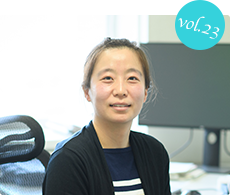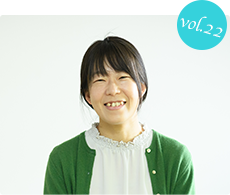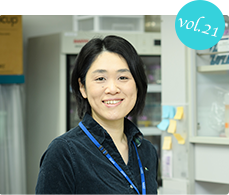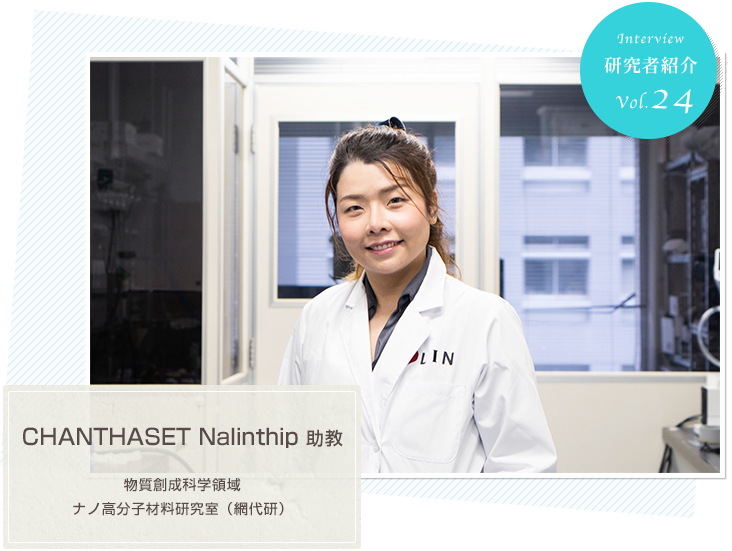
![]()
Born in Bangkok, Thailand, received B.Sc. in Chemistry from Kasetsart University in 2013 and M.Sc. in Nanomaterials Chemistry from the same university in 2015.Received Ph.D. from Nara Institute of Science and Technology (NAIST) in 2018 under Professor Hiroharu Ajiro at the Laboratory of Nanopolymeric Materials, Division of Materials Innovation Science. Joined SCG Chemical Company (Thailand) from 2019. From June 2019, she joined the R&D group, Assistant Professor at Nara Institute of Science and Technology (NAIST). Her current research interests include design and synthesis of new biodegradable polymers, and their development by chemical modification.
Why did you become a researcher?
I have been good at math and science since high school, and I wanted to be an astronaut in the future. I wanted to go into space and work for NASA one day. However, when I was in high school, I got a big scholarship (Science Achievement Scholarship of Thailand, SAST), which made me want to become a scientist in the field of chemistry.
I went to the Faculty of Chemistry at Kasetsart University and majored in nanomaterials for my master's program, which I completed in 2015, and then went to the Ajiro Lab at our university for my Ph.D. program. After graduation, I worked for SCG Chemicals in Thailand for 3 months. This company deals with polyethylene, and I worked on the development of ultra-thin shopping bags. Then, I returned to the university as a postdoctoral fellow in April 2019 and started as an assistant professor in June 2019.
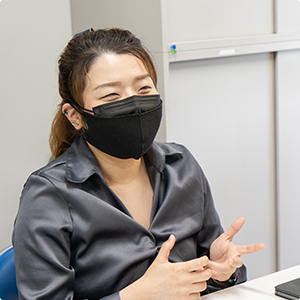
The company's first priority is to make a profit, which is different from developing better products with attention to detail. Also, while human resource development is essential to product development, it is not the primary mission of the company. On the other hand, in academia, one can work on research for materials and product development, away from making profits. Moreover, as an educational institution, our first priority is to educate students, and we can be involved in their development. I came to this conclusion and left the company to return to academia.
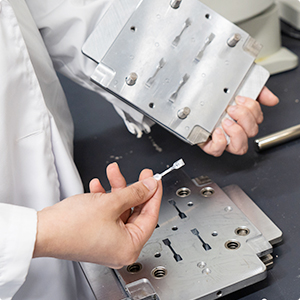
In academia, you can not only do your own research, but you can also be involved in the development of people. By people, I mean people from all over the world. For example, I have one student from Korea, two from Thailand, one from Malaysia, one from Indonesia, one from China, and one from France. I think we are really involved in the growth of people from all over the world (laughs).
In the lab, I enjoy the time I spend discussing things with the students the most. The lab is a place where everyone can express their opinions. It is very enjoyable and stimulating to learn about their opinions through discussions with students. In fact, I prefer working with students in the lab to giving presentations in front of others.
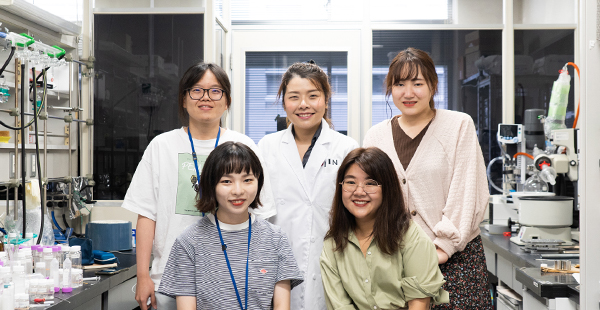
Building a Career in Japan
There are three reasons why I started my academic career at NAIST after leaving my company in Thailand. Dr. Ajiro is a very good boss, and although he is Japanese, he is more open and flexible to people from overseas like me. The second reason is the research environment in Japan. Thai scientists generally do not have access to sufficient funding to continue their research, nor do they have the support of our university's start-up research fund. Third, the university where the lab was located was NAIST. In fact, when I was looking for a job, I thought about taking a job in another country. But I chose NAIST. I am a graduate of NAIST and I know that this is a good research environment. I also know how to live as a researcher, that is, how to accumulate research results. Of course, I could have applied to other universities in Japan, but it would have taken me a long time to build a new life there.
My current goal is to become a well-known faculty member in Japan. I think the research environment in Japan suits me well. I have spent my research life in Germany and the U.S., as well as in Thailand, but I like the Japanese system. Yes, there is a lot of paperwork, but that is not a problem for me.
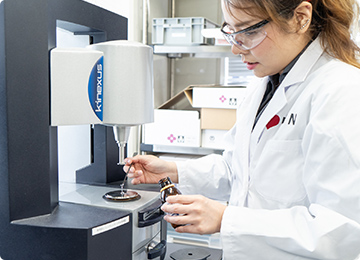
Daily schedule
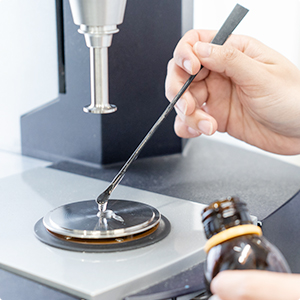
The core time at the Ajiro lab is from 9:30 to 18:30, and I spend all of that time working and discussing with my students. I do my own research and paperwork in the evenings and during my lunch break. I have five students this academic year, and they are constantly asking me if I have a minute, so I make it a priority to respond to them. I really enjoy doing this.
I am still single, so on Saturdays and Sundays I clean the house and do the laundry by myself, and sometimes I go to the badminton club or tennis club at NAIST. I also like to drive and take short trips by car. Driving is very relaxing. On my days off, I don't come to the university unless I have to work at an open campus or something.
Research environment and challenges at NAIST
The research environment at NAIST is very good. Because of its small size, the speed of all procedures and coordination is very fast. The shared equipment is good, and I am very grateful to the technical staff. There are about three wonderful technical staff members who are always helpful. They respond quickly to email requests and maintain the equipment well.
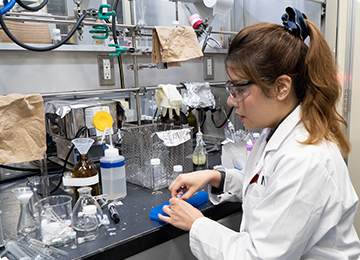
I also love that the students have access to shared equipment. If this were in Thailand, it would take a day to do an analysis on the superconducting nuclear magnetic resonance (NMR) machine. But at NAIST, it only takes 10 minutes.
On the other hand, the living environment is difficult. Since NAIST is not located in an urban area, buses are not frequent and it is better to have a car for shopping. However, there is a research project on campus, the NAIST Car Sharing System, which allows students to rent and return cars at two locations: on campus and in a parking lot near the train station, where there are large commercial facilities and a clinic mall. I think car sharing is a good initiative because it is open to all students, faculty and staff and can be used by anyone who wants to return a vehicle.
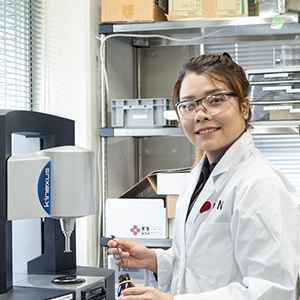
When I first arrived here, I was surprised by the small number of female faculty members. In Thailand, there are many female faculty members at universities, even more than male faculty members, so the situation in Japan is completely opposite to that in Thailand. In Japan, there are very few women in academia itself. In Thailand, 60 to 70% of the faculty members are women, and many of the students are women. When Dr. Ajiro told me before I came to the university, "You are a woman, you are from overseas, you are needed by the university, and we will support you, so please apply for the position. At first I did not understand what he meant. In Thailand, female faculty members are in the majority.
Now NAIST is trying to increase the proportion of female faculty members, which I think is a good thing. I am glad that Dr. Marine Louis, who is an overseas woman like me, was appointed to the Photoreaction Molecular Science Laboratory (Kawai Lab) in the Materials Science Division this fiscal year. I have never felt inconvenienced by being a woman at NAIST, and I can talk freely with many male professors. However, it was nice to be able to exchange information with Dr. Marine and talk to her without hesitation. Actually, I have not been able to connect with Japanese female professors yet, so I would like to try in the future.
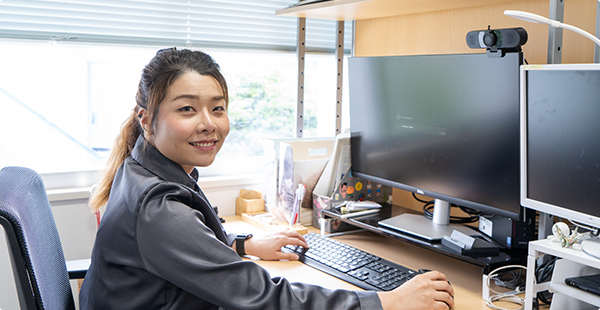
One thing I wish NAIST could do better is to have a coffee shop on campus. The coffee shop in the Takayama Science Plaza near the university recently closed, and now there is no place to have a cup of coffee. I think it would be better if there was a place where people could talk about their research and interview each other over a cup of coffee.
(July 2021)

-
2021.3 updated
Division of Information Science
-
2021.3 updated
Division of Biological Science
-
2021.3 updated
Division of Materials Science






